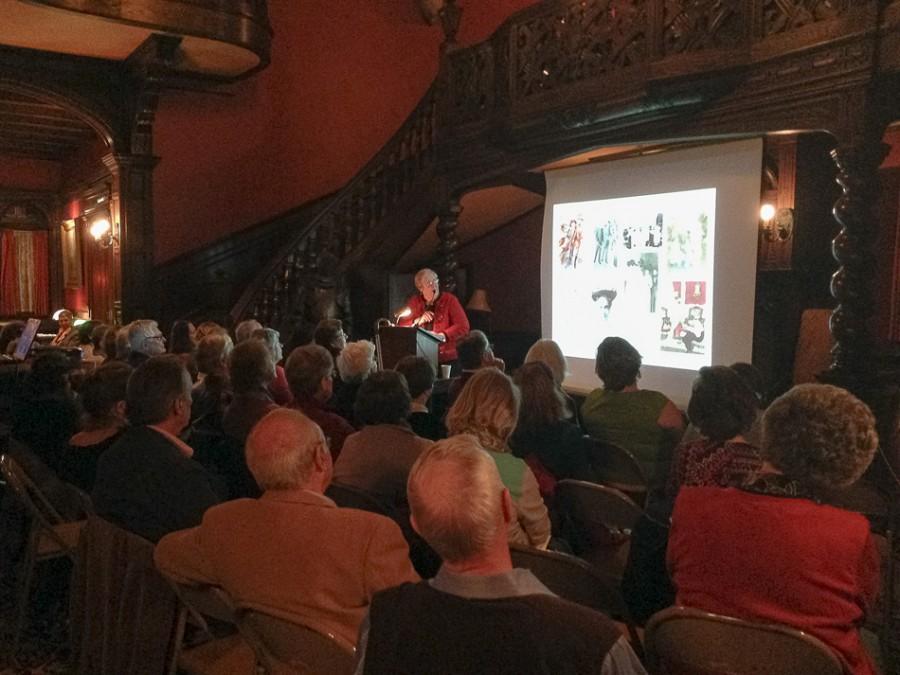History Center holds lecture on WWI fashions, customs
Tori Latham/The Daily Northwestern
Janet C. Messmer, costume curator at the Evanston History Center, gives a lecture to about 50 people Thursday night. As part of the history center’s “Under the Buffalo” series, Messmer spoke about how World War I influenced the fashions and social customs of the time.
November 7, 2014
The Evanston History Center held a lecture Thursday night about the influence of World War I on fashion and social customs.
The center’s costume curator Janet C. Messmer examined in her lecture, titled “The Great War, Fashion & Social Customs: A Look at the War’s Influence,” how American fashion transformed between the 1910s and the 1920s and how those changes reflected the changing ideals of the time. The event, which was attended by about 50 people, was the third installation in the “Under the Buffalo” series put on annually by the history center, 225 Greenwood St.
Deerfield, Illinois resident Nina Buzyna said she decided to attend because she was interested in the topic and because she had enjoyed hearing Messmer speak at another event.
“I think seeing how fashion and society changed is very fascinating,” she said. “I can’t wait to hear her talk about those aspects during the war.”
Messmer began by addressing the fashions and customs before the war. American citizens embraced Victorian ideas and values and adopted the Victorian style of dress as the proper way, she said.
“At this time, it was only acceptable that women show their foot during the day and often, not even that much,” Messmer explained. “Men dressing for business, unless they held a very prominent position, wore the normal business suit men wear today, which was seen as very casual back then.”
Transitioning into the years during the war, Messmer pointed out that many women joined the war effort and put themselves to work. Because of that, many social campaigns were disrupted, such as the fight for prohibition and women’s right to vote.
“Civilian fashions really began to shift at the time of war,” she said. “Skirts were getting shorter because of rationing, but also because women were getting busier and didn’t want to be hampered down with their skirt.”
Many traditional fashion choices began to die with the war, Messmer said. Men stopped wearing white tie and tails and transitioned to wearing tuxedos. Some of the greatest changes came in mourning wear. She said that the war was already too depressing for most people, so they did not want to see everyone wearing black for such long periods of time.
“The clothing was still black, but it was cut in the latest style,” she said. “Women began to look good while wearing mourning. The rules went out the window.”
After the war, young people began to lead the way and started to make up their own minds, she said.
“They behaved in ways that shocked and horrified their elders,” she said. “Women began to drink in public, they wacked their hair off and they were thrilled to enter the workforce and be independent.”
It was the first time since the 15th century that women were allowed this sort of freedom, Messmer said. They no longer had to wear corsets and brassieres showed up.
“This was the first time the girlish figure was in,” she said. “Fashion previously had been all about curves, curves, curves. Everything changed in the Twenties and the world was never the same.”
Evanston resident Tad Walczak also said he found the topic intriguing because due to his studies in American history.
“It’s important to know how the customs, culture and clothes have changed,” he said. “This is something that should be promoted and introduced more to the public.”
Email: torilatham2017@u.northwestern.edu
Twitter: @latham_tori



